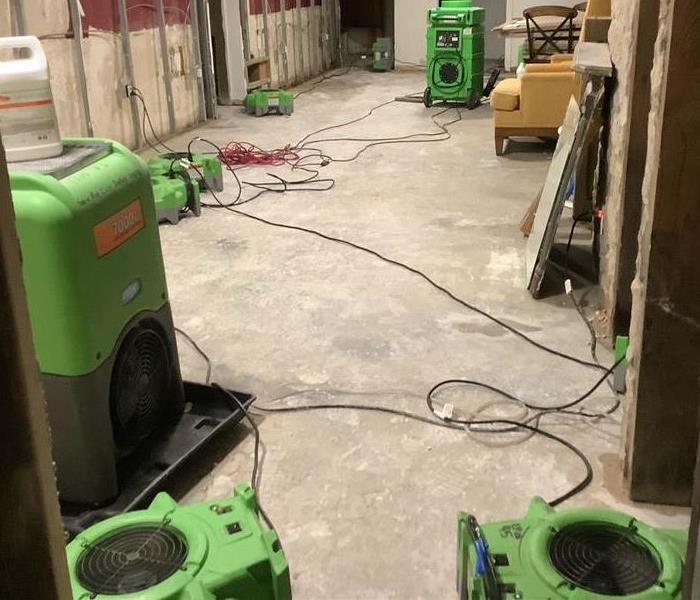Returning To A Water Damaged Home
11/9/2023 (Permalink)
 Returning to a water damaged home isn't fun but we have the equipment needed to restore your home back to normal.
Returning to a water damaged home isn't fun but we have the equipment needed to restore your home back to normal.
Returning to a water-damaged home can be overwhelming and distressing. It's crucial to approach the situation with caution and follow proper safety measures to minimize risks. Here's a step-by-step guide on what to do if you're returning to a home that has been damaged by water:
1. Ensure Safety:
- Do not enter if it's unsafe: If there is still standing water or the structure of the building is compromised, do not enter the home. Contact a professional to assess the safety of the building.
- Turn off utilities: If it's safe to do so, turn off electricity, gas, and water to prevent further damage and reduce the risk of electrical hazards.
2. Document the Damage:
- Take photographs and videos: Document the damage for insurance purposes. Capture as many details as possible to support your insurance claim.
- Make a list: Create an inventory of damaged items. Note their description, approximate value, and the date of purchase if possible.
3. Contact Your Insurance Company:
- File a claim: Contact your insurance company as soon as possible to report the damage. Provide them with the documentation you've collected.
4. Water Removal and Cleanup:
- Remove standing water: Hire professionals to pump out standing water from the property.
- Dry out the area: Use fans, dehumidifiers, and open windows to help dry out the affected areas. Mold can start growing within 24-48 hours, so it's essential to dry the space quickly.
- Dispose of damaged items: Remove and properly dispose of items that cannot be salvaged, as they can harbor mold and bacteria.
5. Professional Assessment and Repairs:
- Get professional assessments: Have professionals assess the extent of the damage, including structural damage and potential health hazards.
- Begin repairs: Work with reputable contractors and restoration professionals to repair and restore your home. This may include repairing drywall, flooring, and electrical systems.
6. Prevent Mold Growth:
- Mold prevention: Act quickly to prevent mold growth. Clean and disinfect all affected areas. Consider using mold inhibitors on walls and surfaces.
- Proper ventilation: Ensure proper ventilation in the affected areas to promote drying and prevent moisture buildup.
7. Health Precautions:
- Protective gear: Wear appropriate protective clothing, gloves, and masks to avoid direct contact with contaminated water and materials.
- Vaccinations: Ensure your tetanus vaccination is up-to-date, especially if you have any cuts or injuries.
8. Emotional Support:
- Seek support: Dealing with the aftermath of water damage can be emotionally draining. Reach out to friends, family, or support groups for emotional support.
9. Prevent Future Incidents:
- Identify the cause: Determine the cause of the water damage (e.g., burst pipes, flooding) and take necessary steps to prevent future incidents.
- Consider preventive measures: Invest in a sump pump, waterproofing, or other measures to protect your home from future water damage.
Remember that recovering from water damage takes time and effort. Be patient and thorough in the recovery process, and don't hesitate to seek professional help when needed.






 24/7 Emergency Service
24/7 Emergency Service